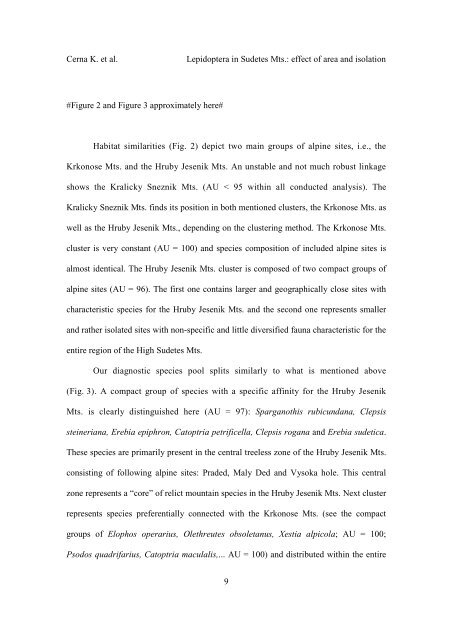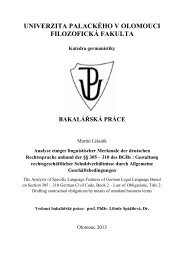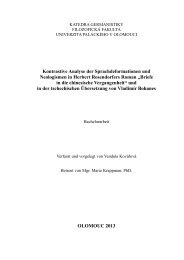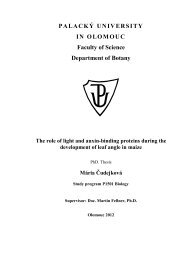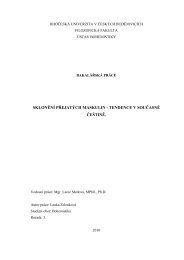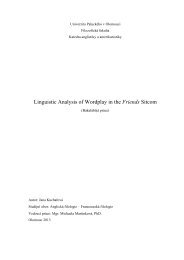You also want an ePaper? Increase the reach of your titles
YUMPU automatically turns print PDFs into web optimized ePapers that Google loves.
Cerna K. et al.<br />
Lepidoptera in Sudetes Mts.: effect of area and isolation<br />
#Figure 2 and Figure 3 approximately here#<br />
Habitat similarities (Fig. 2) depict two main groups of alpine sites, i.e., the<br />
Krkonose Mts. and the Hruby Jesenik Mts. An unstable and not much robust linkage<br />
shows the Kralicky Sneznik Mts. (AU < 95 within all conducted analysis). The<br />
Kralicky Sneznik Mts. finds its position in both mentioned clusters, the Krkonose Mts. as<br />
well as the Hruby Jesenik Mts., depending on the clustering method. The Krkonose Mts.<br />
cluster is very constant (AU = 100) and species composition of included alpine sites is<br />
almost identical. The Hruby Jesenik Mts. cluster is composed of two compact groups of<br />
alpine sites (AU = 96). The first one contains larger and geographically close sites with<br />
characteristic species for the Hruby Jesenik Mts. and the second one represents smaller<br />
and rather isolated sites with non-specific and little diversified fauna characteristic for the<br />
entire region of the High Sudetes Mts.<br />
Our diagnostic species pool splits similarly to what is mentioned above<br />
(Fig. 3). A compact group of species with a specific affinity for the Hruby Jesenik<br />
Mts. is clearly distinguished here (AU = 97): Sparganothis rubicundana, Clepsis<br />
steineriana, Erebia epiphron, Catoptria petrificella, Clepsis rogana and Erebia sudetica.<br />
These species are primarily present in the central treeless zone of the Hruby Jesenik Mts.<br />
consisting of following alpine sites: Praded, Maly Ded and Vysoka hole. This central<br />
zone represents a “core” of relict mountain species in the Hruby Jesenik Mts. Next cluster<br />
represents species preferentially connected with the Krkonose Mts. (see the compact<br />
groups of Elophos operarius, Olethreutes obsoletanus, Xestia alpicola; AU = 100;<br />
Psodos quadrifarius, Catoptria maculalis,... AU = 100) and distributed within the entire<br />
9


